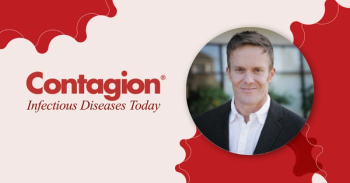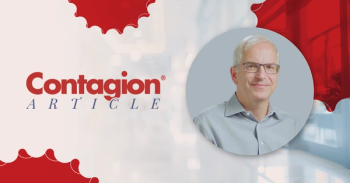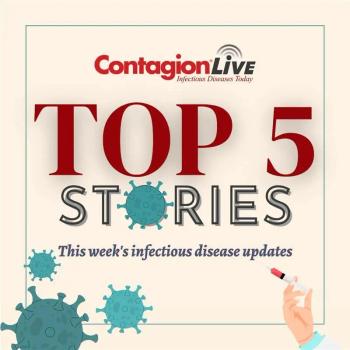
World Antimicrobial Resistance Awareness Week: Broader Recognition of the Ongoing Threat
AMR Action Fund CEO Henry Skinner, PhD, MBE, discusses the significance of this week, provides an update on the Pasteur Act, and the differing approaches between Europe and the US with regards to push-pull incentives.
Today marks the first day of World Antimicrobial Resistance Awareness Week. This week is important because it reminds the public how antibiotics have transformed human health. Everyone is touched by antibiotics and the need to treat infections.
Within just a few generations, we went from a world where pneumonia, childbirth, and routine infections were often fatal to one in which these threats became manageable. That extraordinary progress has made it easy to forget how dangerous the pre-antibiotic era truly was. But antimicrobial resistance is now eroding those gains, pushing us closer to a future where common infections once again become life-threatening. With AMR already contributing to nearly five million deaths annually, raising awareness is no longer optional—it is urgent.
This global awareness week plays a critical role in bringing AMR out of the background and into public conversation, especially for the people whose decisions shape health systems: policymakers, clinicians, journalists, and even influential voices on social platforms. Because AMR often advances quietly—without the headline-grabbing visibility of other health crises—it requires deliberate effort to capture and maintain public attention. World Antimicrobial Resistance Awareness Week creates a rare and valuable opportunity to elevate understanding of AMR’s threat, build broader coalitions of support, and catalyze action across sectors before resistance outpaces our ability to respond. AMR Action Fund CEO Henry Skinner, PhD, MBE spoke to Contagion about recognizing this week, an update on the Pasteur Act, and the differences in Europe and the US with regards to push-pull incentives.
Contagion: Why is it important to recognize World Antimicrobial Resistance Awareness Week?
Skinner: We’ve taken antibiotics for granted for far too long. My grandparents were born in the pre-antibiotic era, when bacterial pneumonia was a leading cause of death, routine infections carried frightening fatality rates, women frequently died from childbirth-related infections, and surgical procedures and dental work came with extraordinarily high infection risks.
That era feels like ancient history, but it isn’t. Penicillin became available only 80 years ago. Antibiotics were so transformative that within a generation we collectively forgot how devastating bacterial infections were for those who came before us.
Yet here we are, facing the prospect of sliding backward. Because of the rapid rise of antimicrobial resistance, we are inching toward a world where common infections once again become deadly. AMR is already implicated in nearly 5 million deaths each year—an existential-scale threat—yet outside of health policy and infectious disease circles, awareness remains frustratingly low.
That’s why World Antimicrobial Resistance Awareness Week is important. It brings this issue out of the background and puts it in front of people who aren’t thinking about AMR everyday—policymakers, journalists, clinicians, and even social media influencers. We need far broader recognition of the threat, and this week creates a rare opportunity for all of us to elevate society’s understanding of AMR.
Contagion: Antimicrobial resistance is often called a “silent pandemic.” In your view, what are the most pressing consequences of AMR for global health, and how can we better communicate its urgency to the public and policymakers?
Skinner: To be frank, I take issue with calling AMR a “silent pandemic.” Patients with intractable infections—and the families fighting alongside them—are not suffering in silence, nor should they. There’s some truth to the idea that the squeaky wheel gets the grease. If we keep labeling AMR as silent, we risk giving the public and policymakers one more reason to look away.
One way to communicate the urgency more effectively is to underscore how much modern medicine depends on antibiotics, and how the failure of antibiotics will erode progress across nearly every specialty. I’m reminded of a
That is a powerful sentiment—and it’s not unique to oncology. Clinicians in transplant medicine, burn care, diabetes, labor and delivery, rare diseases, and beyond are grappling with the same reality: to deliver the best possible care, they need effective antibiotics, and AMR is a direct threat to their patients.
When clinicians understand the scope of AMR and see how directly it will affect their patients and practice, they become some of the strongest advocates we have. Broadening that coalition, and empowering clinicians to speak up, will be essential to making AMR impossible to ignore. But doing so requires evidence. That’s why the AMR Action Fund helped launch the
Contagion: As resistance continues to outpace new drug development, what innovations—scientific, regulatory, or behavioral—do you think could most effectively curb the rise of antimicrobial resistance over the next decade?
Skinner: First, we need to replenish the pipeline of antibiotics in development with truly innovative therapies. That means antibiotics with new mechanisms of action that hit new targets and that are effective against the most difficult-to-treat pathogens. As the
Second, we need a transformative diagnostic test. In my opinion, that would be a low-cost point-of-care diagnostic that tells the clinician what antibiotics the pathogen is susceptible to within 15 minutes. That would be a game changer both in terms of improving patient outcomes and enhancing antibiotic stewardship practices.
That said, I’m not sure how optimistic I am that we’ll see the necessary innovation on the drug or diagnostic side in the next decade, especially given the persistent lack of investment into AMR.
On the regulatory front, we need regulatory authorities across the globe to align and simplify the approval processes to make access faster and more affordable.Once a drug has been approved by more than one stringent regulatory authority, which is identified by the WHO and includes the US FDA, the UK MHRA, and the European Union authorities, other countries should make approval simple and efficient.Furthermore, post-approval obligations, such as the requirement to study the newly approved drug in pediatric patients should be aligned so that the studies do not need to be repeated in multiple jurisdictions.
On the behavioral side, I wish patients and physicians would discuss the use of antibiotics so that the over-prescription of antibiotics can be dramatically reduced. Physicians, PAs, and nurses need time to engage with patients on what are the best choices for their care and recovery.There is much we can do to ensure that antibiotics are properly dispensed and used as prescribed.
Contagion: Can you provide the latest on where we stand with the PASTEUR Act?
Skinner: As you know, it was not taken up in the previous Congress. Fortunately, there remains broad bipartisan interest in remedying the market failures that have stymied investment into antimicrobial R&D, and legislators like Representatives Buddy Carter and Scott Peters and Senators Todd Young and Michael Bennett and many others have expressed a deep interest in acting on this problem before it gets any worse. It is possible that we’ll see a version of PASTEUR reintroduced in early 2026.
Contagion: In terms of push-pull incentives, there seems to be better progress in Europe. Do you see any movement on that front in the US?
Skinner: Europe is moving in the right direction on pull incentives. The United Kingdom launched its subscription program that pays companies a fixed annual fee for a period of time for access to new antibiotics and Italy followed with a program that provides higher reimbursements.
The European Union is also nearing the final stages of adoption for the General Pharmaceutical Legislation, which includes a pull incentive for antibiotic R&D in the form of a transferable exclusivity voucher, or TEV. This proposed provides antimicrobial developers with a financial reward at the time of approval as opposed to payments trickling out over many years. That will appeal strongly to biotech investors who have a fiduciary responsibility to generate returns on a relatively short time scale. But, of course, the devil is in the details, especially with regards to how many vouchers will be issued and how much each voucher might be worth.
All of this is to say that European policymakers are acting faster than US policymakers. But nobody is acting fast enough given the state of the pipeline and the fact that antibiotic-resistant infections will contribute to some 5 million deaths this year and next year and climbing every year going forward until we see effective policy reforms.
Newsletter
Stay ahead of emerging infectious disease threats with expert insights and breaking research. Subscribe now to get updates delivered straight to your inbox.

























































































































































































































































































